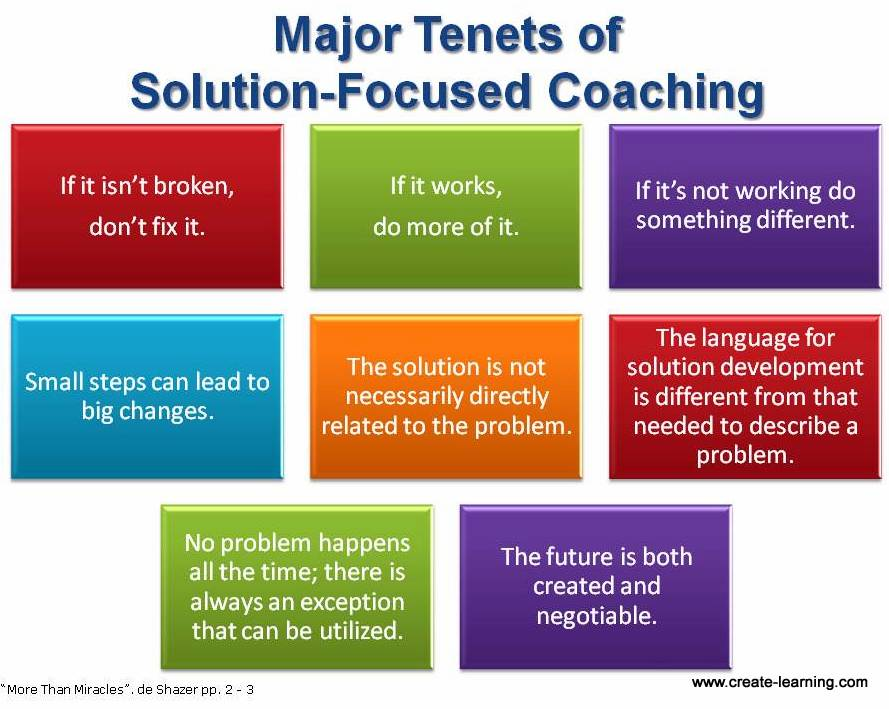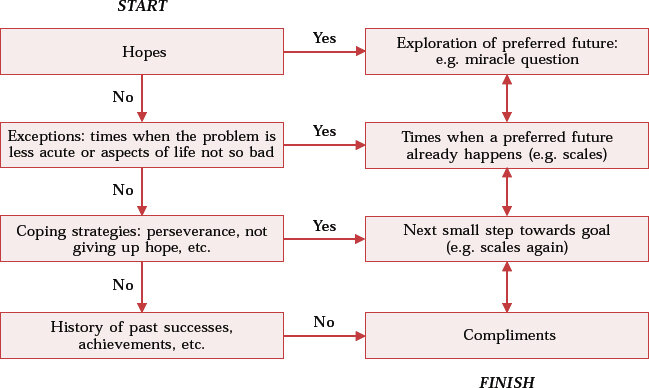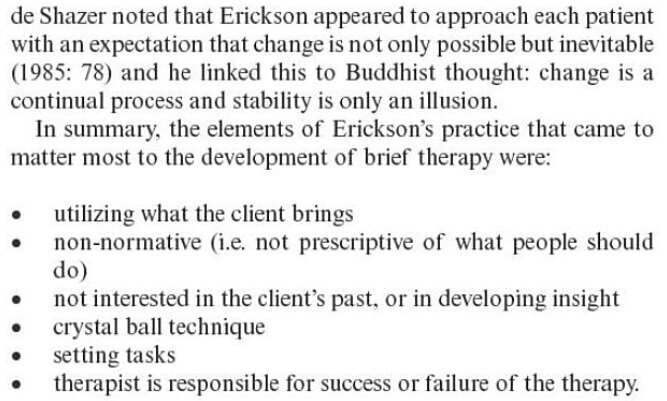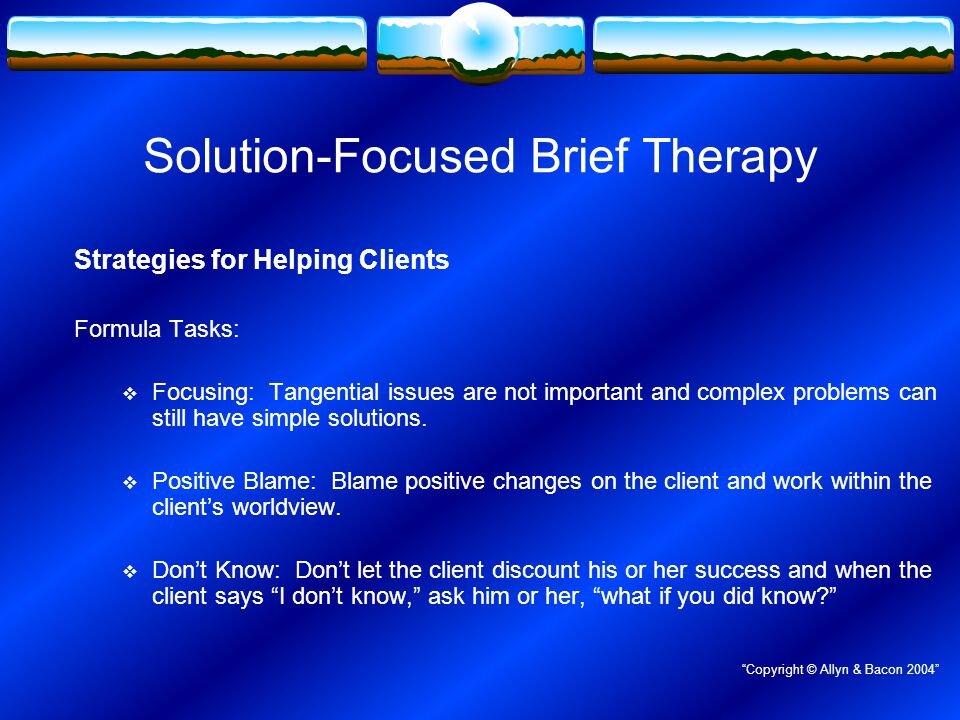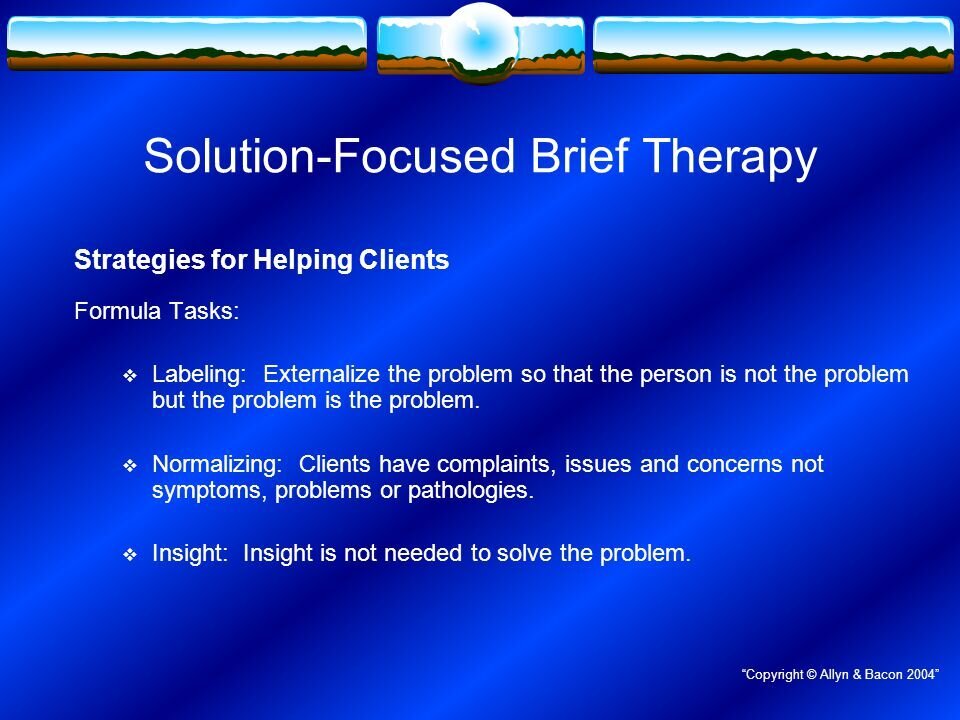"Questions and compliments are the primary tools of the solution-focused approach. SF therapists and counselors deliberately refrain from making interpretations and rarely confront their clients. Instead, they focus on identifying the client's goals, generating a detailed description of what life will be like when the goal is accomplished and the problem is either gone or coped with satisfactorily. In order to develop effective solutions, they search diligently through the client's life experiences for "exceptions", e.g. times when some aspect of the client's goal was already happening to some degree, utilizing these to co-construct uniquely appropriate and effective solutions."
~ Wikipedia
~ Wikipedia

